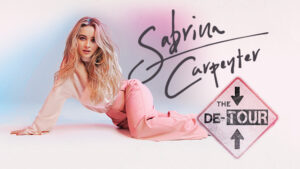
Nursing Study Guide
Success in nursing school demands more than just memorizing textbook content—it requires understanding, application, and critical thinking. For visual learners, traditional note-taking might not cut it. If you’re someone who remembers images more than paragraphs, a Nursing Study Guide that leverages charts, diagrams, and flashcards can be a game-changer.
In this article, we’ll explore how visual learning tools like diagrams and flashcards can help nursing students master complex topics and pass exams with confidence. Whether you’re prepping for the NCLEX or tackling your next med-surg quiz, this guide is tailored for your visual brain.
Understanding the Visual Learner in Nursing School
Visual learners absorb information best through images, colors, and spatial understanding. This style makes complex nursing concepts more approachable when presented visually. Unlike auditory or kinesthetic learners, visual learners benefit from study materials that show rather than tell.
Characteristics of visual learners:
-
Prefer written instructions over verbal
-
Remember faces better than names
-
Use highlighters or color-coded notes
-
Benefit from charts, mind maps, and videos
Understanding your learning style can help you optimize your study time and retain more information. A custom Nursing Study Guide that caters to your visual strengths is the key to success.
Why Traditional Nursing Study Methods Don’t Always Work
Most nursing school curricula rely heavily on textbooks, lectures, and clinical experiences. While these are important, they don’t always align with the needs of visual learners. Reading long passages or listening to lectures without a visual supplement can lead to frustration, confusion, and poor retention.
The challenge is clear: How can visual learners absorb information better and faster? The answer lies in visually-rich study materials like:
-
Labeled anatomy diagrams
-
Drug classification charts
-
Flashcards for disease symptoms
-
Infographics on care plans
-
Mind maps for nursing processes
Let’s break down how each tool can turn your Nursing Study Guide into a visual powerhouse.
The Power of Charts in Your Nursing Study Guide
Charts provide structured, quick-glance information that’s easy to digest. In nursing school, you’re expected to memorize everything from lab values to fluid balances to drug categories. Organizing these topics in chart form simplifies study and enhances recall.
Essential Nursing Charts to Include:
-
Normal Lab Values Chart
-
Hemoglobin, WBC, Platelets, Sodium, Potassium
-
Helps with interpreting labs during clinical rotations and exams
-
-
Pharmacology Drug Class Chart
-
Group drugs by category, mechanism of action, side effects
-
Color-code for fast memorization
-
-
Vital Signs by Age Group
-
Pediatric vs. adult vs. geriatric vital norms
-
-
IV Fluids Cheat Sheet
-
Crystalloids vs. colloids, hypotonic vs. hypertonic
-
By incorporating these visuals into your Nursing Study Guide, you save time and reinforce key facts in a way your brain naturally understands.
Diagrams: Visualizing the Human Body and Beyond
Anatomy and pathophysiology are deeply visual subjects. Trying to memorize the structure of the heart or the renal system without diagrams is like learning geography without a map. Diagrams bring clarity to these complex topics.
Must-Have Diagrams for Nursing Students:
-
Anatomical Systems Diagrams
-
Cardiovascular, respiratory, nervous, GI, and reproductive systems
-
-
Disease Progression Visuals
-
For conditions like diabetes, asthma, and heart failure
-
-
Wound Staging Images
-
To visually identify pressure injuries from Stage 1 to 4
-
-
Electrolyte Imbalance Charts
-
Signs and symptoms of hypo/hyper states like hypokalemia or hypernatremia
-
High-quality, labeled diagrams turn textbook jargon into something tangible. A strong Nursing Study Guide for visual learners should include dozens of these illustrations.
Flashcards: Bite-Sized Memory Boosters
Flashcards are a favorite for visual learners—and for good reason. They simplify big topics into manageable, bite-sized chunks. Whether you’re studying solo or quizzing with a classmate, flashcards make repetitive learning fun and efficient.
How to Create Effective Nursing Flashcards:
-
Use Pictures and Color Codes
-
Add illustrations for symptoms, organs, or medical equipment
-
-
Stick to One Concept Per Card
-
Example: One drug, one lab value, or one condition per card
-
-
Make Flashcard Sets for Each Class
-
Pharmacology, med-surg, pediatrics, etc.
-
Many digital tools like Quizlet, Anki, and Brainscape also support image-based flashcards, allowing you to study on the go. A well-structured flashcard system is a critical piece of any Nursing Study Guide built for visual learners.
Combining All Three: How to Build the Ultimate Visual Nursing Study Guide
The best approach is combining charts, diagrams, and flashcards into one cohesive Nursing Study Guide. Here’s how you can build your own:
Step 1: Identify Core Nursing Topics
Break your curriculum into categories:
-
Anatomy & Physiology
-
Pharmacology
-
Pathophysiology
-
Fundamentals of Nursing
-
Clinical Procedures
Step 2: Assign a Visual Format to Each Topic
-
Use charts for lab values, drug classifications, vital signs
-
Use diagrams for anatomy, diseases, care plans
-
Use flashcards for definitions, symptoms, side effects
Step 3: Organize Digitally or in a Binder
-
Digital tools: Google Drive, Notion, or OneNote
-
Physical binder: Use dividers, tabs, and color-coded pages
Step 4: Review Regularly with a Visual Study Routine
-
Schedule flashcard sessions daily
-
Review charts weekly
-
Annotate diagrams during lectures or clinicals
Your Nursing Study Guide should grow with you. As you move through nursing school, continue adding to it and customizing it based on your study needs.
Additional Visual Learning Tips for Nursing Students
-
Use Highlighters & Sticky Notes
-
Color-coded notes can help reinforce learning and keep you organized
-
-
Watch YouTube or Animation Videos
-
Channels like RegisteredNurseRN and Khan Academy provide visual lectures and animations
-
-
Use Mind Maps
-
Great for understanding relationships between nursing concepts, like how diabetes affects multiple organ systems
-
-
Join Visual Learning Study Groups
-
Collaborate with peers who prefer drawing, sketching, or visual explanations
-
-
Incorporate Apps and Software
-
Picmonic and Osmosis offer nursing content in infographic and animated formats, perfect for visual learners
-
Benefits of a Visual Nursing Study Guide
✅ Better Retention – Visuals stick in your brain longer than text
✅ Faster Recall – During tests or clinicals, you can picture the chart or diagram
✅ More Engagement – Studying becomes less boring and more interactive
✅ Higher Grades – Visual learners who tailor their study guide see results faster
When you customize your Nursing Study Guide to fit your learning style, you not only make studying more effective—you make it more enjoyable.
Final Thoughts: Study Smarter, Not Harder
Nursing school is tough, but your study method doesn’t have to be. Visual learners have a unique advantage when they leverage the power of diagrams, charts, and flashcards. Building a custom Nursing Study Guide tailored to your learning style can make the difference between just getting by and truly excelling.
Remember: it’s not about how long you study, but how effectively you study. So start organizing your nursing material visually today. Your brain will thank you on exam day!



